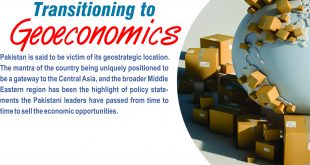In October 2016, lawmakers from the Senate of Pakistan – the upper house of the country’s parliament – expressed a growing fear that the China-Pakistan Economic Corridor (CPEC) could turn into another East India Company if the country’s interests were not actively protected. East India Company was a British trading mission sent to India which served as the precursor to the British colonial presence in the Subcontinent. In the wake of the utilisation of local financing for CPEC projects, instead of funding from the Chinese or any other foreign investment, there are apprehensions that this fear might become a reality.
While the China-Pakistan Economic Corridor (CPEC) is making rounds in international corridors, back at home analogies are being drawn between the $57 billion Chinese investment in Pakistan and East India Company’s invasion of the Indian Subcontinent. Moreover, Pakistan’s growing dependence on China is becoming a major cause of concern for the people drawing this analogy. This dependence is evident in the fact that during the last couple of years, Pakistan has come to define its economy with China which means there is no alternative plan to revive the country’s economic future. While the terms of the loans offered to Pakistan under the CPEC are not public, it’s likely – as the IMF warns – that Pakistan will be returning those loans after the corridor starts generating revenues. Once the Chinese investors begin repatriating profits, “Pakistan will need to manage increasing CPEC-related outflows,” warns the IMF, adding that the amounts involved “could add up to a significant level given the magnitude of the FDI”.
Apprehensions
CPEC is actually a part of the much bigger One Belt, One Road (OBOR)/Maritime Silk Route initiative of China that is worth $900 billion. Over 20 countries involved in this mega project will provide access for China’s domestic overcapacity and capital for regional infrastructure development. Total size of CPEC is $45 billion but as per the details available, Pakistan will eventually be paying $90 billion to China over a period of 30 years against the loan and investment assortment worth $50 billion under CPEC. The estimated return – sum of principal and interest on foreign currency debt and repayment of profits/dividend on equity investment – shows 40% return on investment. The amount increased to $54 billion after the inclusion of more projects in CPEC such as investments in Pakistan Railways and financing of the Karachi Circular Railways project. The volume of return would increase accordingly.
Infrastructure and power projects – part of the CPEC portfolio and divided across time in terms of priority – are expected to be completed by fiscal year 2030. Leading economists have estimated annual average repayments of $3-4 billion per year post fiscal year 2020. It should be noted that project financing for CPEC is being done between Chinese companies and banks and around 25% of CPEC investment is expected to come in Pakistan.
While Pakistan has huge potential for economic growth given the emerging new regional opportunities, challenges related to governance appear to trump Pakistan’s potential again with its leadership failing to come to terms with the high stakes involved. By now, it has become very clear that if Chinese investments go haywire due to our sustained flawed economic policies, Pakistan will be left with a much larger begging bowl as our national debt continues to pile bigger and bigger.
In Pakistan, the rampant corruption, political infightings in the country and inefficient handling of billions of dollars worth loans have forced international lenders to question whether all of extravaganza surrounding the CPEC can change Pakistan’s economic fate if the current policies continued to remain in place.
East India Company and the CPEC
Now, the East India Company remarks by the lawmakers need to be reviewed in true perspective.
The East India Company (EAC) evolved from a small enterprise run by a group of London city merchants, which in 1600 had been granted a royal charter conferring the monopoly of English trade in the whole of Asia and the Pacific. The EAC, however, developed beyond a purely commercial enterprise when war between Britain and France spread to India in the mid-1740s. It established military supremacy over rival European trading companies and local rulers, culminating in 1757 into the seizure of control of the province of Bengal.
In 1765, the Mughal Emperor granted the Company the diwani (the right to harvest the revenues of Bengal, Bihar and Orissa), which provided funds to bolster the Company’s military presence in the Subcontinent. Further territorial acquisitions in India during the late eighteenth and early nineteenth centuries cemented the change in the Company’s role from mere trader to a hybrid sovereign power.
The British then subjugated the subcontinent, looted its resources and shipped them back to London. The worst human rights abuses were committed during the British rule.
On the other hand, looking back at the 6,000-year history of China, one thing is crystal clear: It never invaded any nation or a country despite having requisite military might. Why then would it do now?
Historical Perspective
Research reflects that rather than invading any country, China adopts a policy of investing in neighbouring countries.
‘Invest … not Invade’ is the motto adopted by Beijing when it comes to comparative weaker nations and states. China has been a country pursuing a policy of mutual coexistence and harmony irrespective of its strong economic, human and military might. Moreover, China has been a country on the defensive. The Great Wall was built to save China from the Mongol warriors and other invaders coming from the North. Speculations that after 6,000 years of peaceful coexistence, China would all of a sudden get involved with expansionist agenda to invade friendly neighbours like Pakistan seem ridiculous.
If one can study China’s rise, it’s easy to conclude that the Chinese model is to invest and build in the developing markets and share the commercial rewards with the host nations and markets.
Another important aspect of China’s strategy is to build new clusters of middle class by investing in new markets. This is how China develops new customers for its manufacturers and service-providers. Another good aspect of Chinese investors is that they deliver the goods in most arduous conditions where others fail.
Comparing Apples and Oranges?
There is no point of comparison between East India Company and CPEC. The only comparison that might work is in the extraction of a surplus from Pakistan and its transmittal to China. But, even here, it must be kept in mind that the surplus is not being extracted through the use of force or from land revenue or taxation, but purely from debt-servicing and repatriation of profits. All foreign investment involves these elements, not just the one coming from China. On the contrary, we are also hearing about the arrival of Chinese investment under CPEC, we also have auto makers entering the Pakistani market from Korea and Europe, as well as a Dutch company acquiring stakes in the food sector. This is not necessarily a creeping colonisation.
Conclusion
Hence, in the light of the above-stated arguments, it is absolutely clear that the Chinese trade through CPEC is not, and never was, aimed at capturing Pakistani market which is already rife with Chinese commodities. There are no solid grounds to develop a fear that CPEC means the colonization of Pakistan by China. It only seeks to expand its outreach direct into the Middle East, African and European markets through CPEC.
The whole discussion can be summed up in the words of Federal Minister for Planning and Development, Prof. Ahsan Iqbal:
“Pakistan and China are all-weather and time-tested friends. CPEC is a fusion of Vision 2025 and China’s One-Belt, One-Road philosophy. This is not the first time we are partnering in any front. We had been tied into strategic partnership for decades. CPEC brings forth a transformational paradigm, moving from geo-strategic to geo-economic partnership between the two countries. China’s huge investments in energy, infrastructure and suggested industrial sectors doesn’t provide any extraordinary mileage to either of the partnering countries rather it offers win-win situation and equal opportunities to both China and Pakistan. Hence, there is no question to compare CPEC with East India Company. China is putting into lot of sincere efforts to help Pakistan to improve socioeconomic indicators in Pakistan.”
Highlights
1. In October 2016, lawmakers from the Senate of Pakistan expressed the fear that the China-Pakistan Economic Corridor (CPEC) could turn into another East India Company.
2. Pakistan will need to manage increasing CPEC-related outflows and the amounts involved could add up to a significant level given the magnitude of the FDI, says IMF.
3. Pakistan will be paying $90 billion to China over a period of 30 years against the loan and investment assortment worth $50 billion under CPEC.
4. If Chinese investments go haywire due to our sustained flawed economic policies, Pakistan will be left with a much larger begging bowl.
5. China never invaded any nation or a country despite having requisite military might. Why then would it do now?
6. ‘Invest … not Invade’ is the motto adopted by Beijing when it comes to comparative weaker nations and states.
7. China’s huge investment in energy, infrastructure and suggested industrial sectors doesn’t provide any extraordinary mileage to either of the partnering countries.
 Jahangir's World Times First Comprehensive Magazine for students/teachers of competitive exams and general readers as well.
Jahangir's World Times First Comprehensive Magazine for students/teachers of competitive exams and general readers as well.



